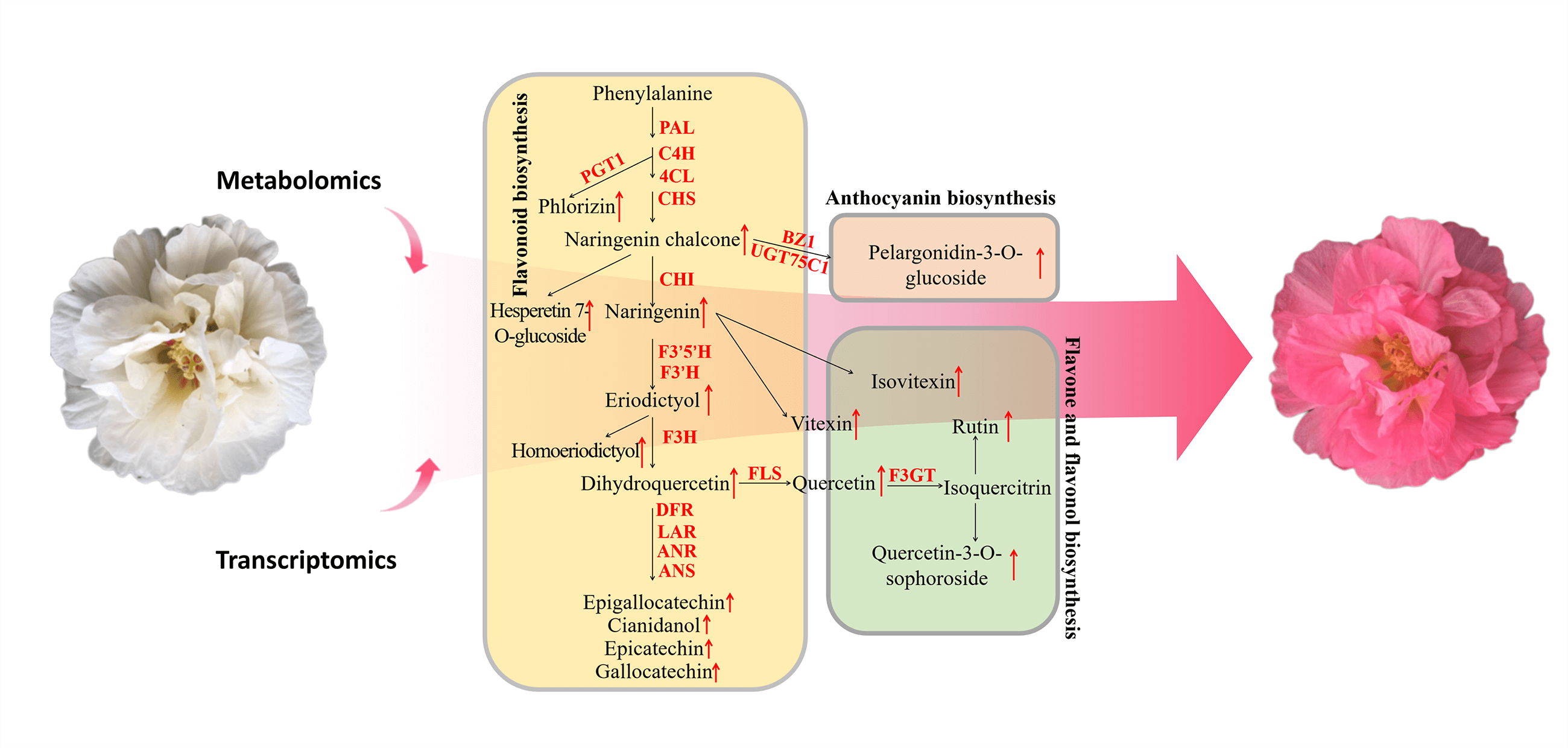 Open Access
Open Access
ARTICLE
Integrated Transcriptomics and Metabolomics Analysis for the Mechanism Underlying White-to-Pink Petal Color Transition in Hibiscus mutabilis Flowers
College of Food and Biological Engineering, Chengdu University, Chengdu, 610016, China
* Corresponding Author: Xiaodong Shi. Email:
(This article belongs to the Special Issue: Plant Secondary Metabolism and Functional Biology)
Phyton-International Journal of Experimental Botany 2024, 93(10), 2571-2581. https://doi.org/10.32604/phyton.2024.056606
Received 26 July 2024; Accepted 20 September 2024; Issue published 30 October 2024
Abstract
Cotton rose (Hibiscus mutabilis) is a well-known ornamental plant that produces large flowers of vibrant colors. However, metabolites in H. mutabilis flowers with vibrant color have not been fully understood. By performing a combined analysis of metabolomics and transcriptomics data, we here explored mechanisms for the production of primary active compounds in this plant. Multivariate statistics unveiled differences in flavonoid metabolism between white and pink flowers, with pink flowers exhibiting a greater flavonoid abundance. The white-to-pink transition of cotton rose flowers may be attributed to pelargonidin-3-O-glucoside formation. On examining the expression of genes related to the structure of flavonoids, pink flowers were found to have a higher number of upregulated genes than white flowers, which resulted in higher flavonoid accumulation in the pink flowers. These results underscore the potential applications and development value of cotton rose flowers. Our study provides relevant insights into the regulation of key active components and the theoretical basis for the efficient utilization of cotton rose flowers.Graphic Abstract

Keywords
Cite This Article
 Copyright © 2024 The Author(s). Published by Tech Science Press.
Copyright © 2024 The Author(s). Published by Tech Science Press.This work is licensed under a Creative Commons Attribution 4.0 International License , which permits unrestricted use, distribution, and reproduction in any medium, provided the original work is properly cited.


 Submit a Paper
Submit a Paper Propose a Special lssue
Propose a Special lssue View Full Text
View Full Text Download PDF
Download PDF Downloads
Downloads
 Citation Tools
Citation Tools